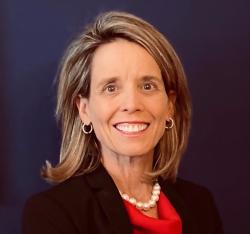Having tracked turnover for five presidents and closely following the churn in the Trump White House, it is clear that what is currently going on is far from normal. Less than a month after President Trump’s inauguration, National Security Advisor Michael Flynn was forced to resign, and this high-level departure marked the beginning of an avalanche that resulted in an additional 21 A Team departures over the course of that year. Compounding the first-year irregularity was the multiple firings, forced resignations, public humiliation of staff members (via Twitter), the onset of the Mueller investigation and the inability to fill high-level government jobs. From the beginning, A Team turnover in the Trump administration outpaced his five predecessors and not just by a small margin.
Composition of the A Team is based on successive National Journal editions that identify those deemed most influential or key “Decision Makers” in a new administration. (Click here for a detailed explanation of the study’s methodology.) Set out below is an historical overview of year-by-year A Team turnover since President Reagan.
Just 32 months into the Trump administration, the rate of turnover had exceeded his five predecessors’ full first terms. At the same time, Cabinet turnover was also breaking new records and the number of vacancies across Senate-confirmed positions in the nation’s federal departments was sky high. Not only had the Trump administration not nominated candidates for many of these positions, but some who had been confirmed were departing at the start of year two. While it is undeniable that the churn in the Trump White House is unlike anything that other presidents have experienced, it is worthwhile to analyze those A Team members who have managed to hold their job since January 2017. Set out below are the ten survivors of the original A Team.
| Category 1: Trusted Confidants | Category 2: Economic and Trade Policy Wonks | Category 3: Outside the Public Eye |
| Kellyanne Conway, Counselor to the President | Richard Burkhauser – Member of the Council of Economic Advisers | Lisa Curtis; National Security Council, Senior Director for South and Central Asia |
| Jared Kushner, White House Senior Advisor | Robert Lighthizer, United States Trade Representative | Amy Swonger, Deputy Assistant to the President for Legislative Affairs and Senate Deputy Director |
| Ivanka Trump, White House Senior Advisor | Peter Navarro, Deputy Assistant to the President and Director of Trade and Manufacturing Policy | |
| Dan Scavino, Assistant to the President and Director of Social Media | ||
| Stephen Miller, Assistant to the President and Senior Advisor for Policy |
I have divided these remaining staff members into three separate categories: those who have been in the inner circle since the presidential campaign, the policy experts, and those outside the public eye. It comes as no surprise that the president’s daughter and son-in-law have remained in place, and while Kellyanne Conway’s public-facing role has waxed and waned, she has remained a stalwart supporter. Despite some infamous Twitter imbroglios, President Trump has also stuck by his social media guru, Dan Scavino. Given the importance of immigration policy to the president’s base, and Stephen Miller’s steadfast adherence, he too has remained in place.
The second category consists of three policy experts. Richard Burkhauser, a low-profile academic, has held onto his position despite the departure of Kevin Hassett, Chair of the Council of Economic Advisers. U.S. Trade Representative Lighthizer has held onto his role in spite of the president’s fiery rhetoric toward U.S. trade partners and the frequent threat and imposition of tariffs. Peter Navarro is the only one of the three who came under scrutiny early on, when he was thought to have been sidelined by Gary Cohn, former Director of the National Economic Council. He has not won internal popularity contests with his hawkish stance toward China, fondness for tariffs, and sometimes combative nature, but these traits have not forced his resignation. In fact, he has outlasted many of his critics within the White House and recently assumed an additional role as Defense Production Coordinator. Perhaps news of his dire warnings to the president about the coronavirus might jeopardize his tenure, just as the president grew weary of intelligence reports from Dan Coats, Director of National Intelligence, who ultimately resigned in the face of mounting tension and pressure from the Oval Office.
The last category of survivors consists of two women, neither of whom worked on the presidential campaign but have nevertheless held the same jobs since entering the White House in 2017. Lisa Curtis hailed from the Heritage Foundation and has worked for four different National Security Advisors, lasting through the Mueller investigation and impeachment. These last two events are noteworthy largely because of the central role the NSC played and the subsequent “revenge” firings that occurred. In addition, the latest National Security Advisor, Robert O’Brien, has made sizeable staff cuts over the past several months and Curtis has remained unscathed. Amy Swonger, a senior member of the legislative affairs team, has solid establishment connections having worked for President George W. Bush and Senate leaders Mitch McConnell and Trent Lott. Establishment connections have worked against some Trump staffers, but she has managed to stay in the job despite a great deal of turnover, including three bosses: Marc Short, Shahira Knight and Eric Ueland. Her likely role in the impeachment process and other legislative battles may have bolstered her standing. Perhaps her prior connection to Senate Majority Leader McConnell and the stable support from Senate Republicans also contributed to her job security. Admittedly, she has had to put out more than a few fires and avoid blame on those rare occasions when Republican Senators have spoken out against the administration, but her ability to stay out of the line of fire has been impressive.
While there is no common denominator across these ten advisers, it is also true that there is no guarantee of continued employment in this White House. The random nature and frequency of staff shuffling is unprecedented. While prior administrations have had their share of palace intrigue, this administration has more public back-biting, infighting, controversy and instability—the consequences of which are on full display as the administration bungles the nation’s response to the most formidable crisis since WWII. Personnel can be a president’s number one asset and this president has done little to recruit and retain the best and the brightest. Though the 10 A Team staff members remaining have demonstrated skills enviable of “Survivor” contestants, their small number tells you all you need to know about the chaos and instability in this administration.
The Brookings Institution is committed to quality, independence, and impact.
We are supported by a diverse array of funders. In line with our values and policies, each Brookings publication represents the sole views of its author(s).





Commentary
And then there were ten: With 85% turnover across President Trump’s A Team, who remains?
April 13, 2020